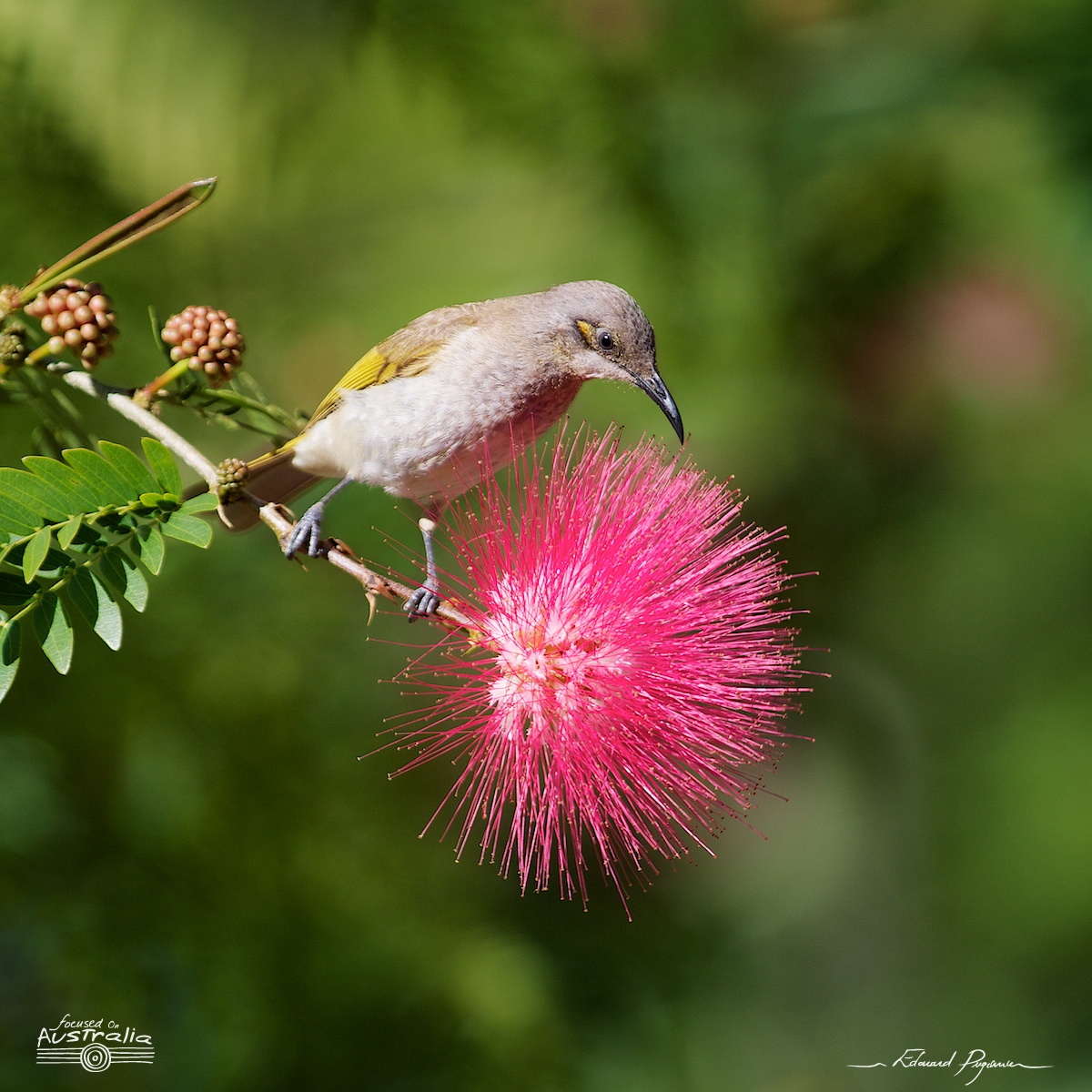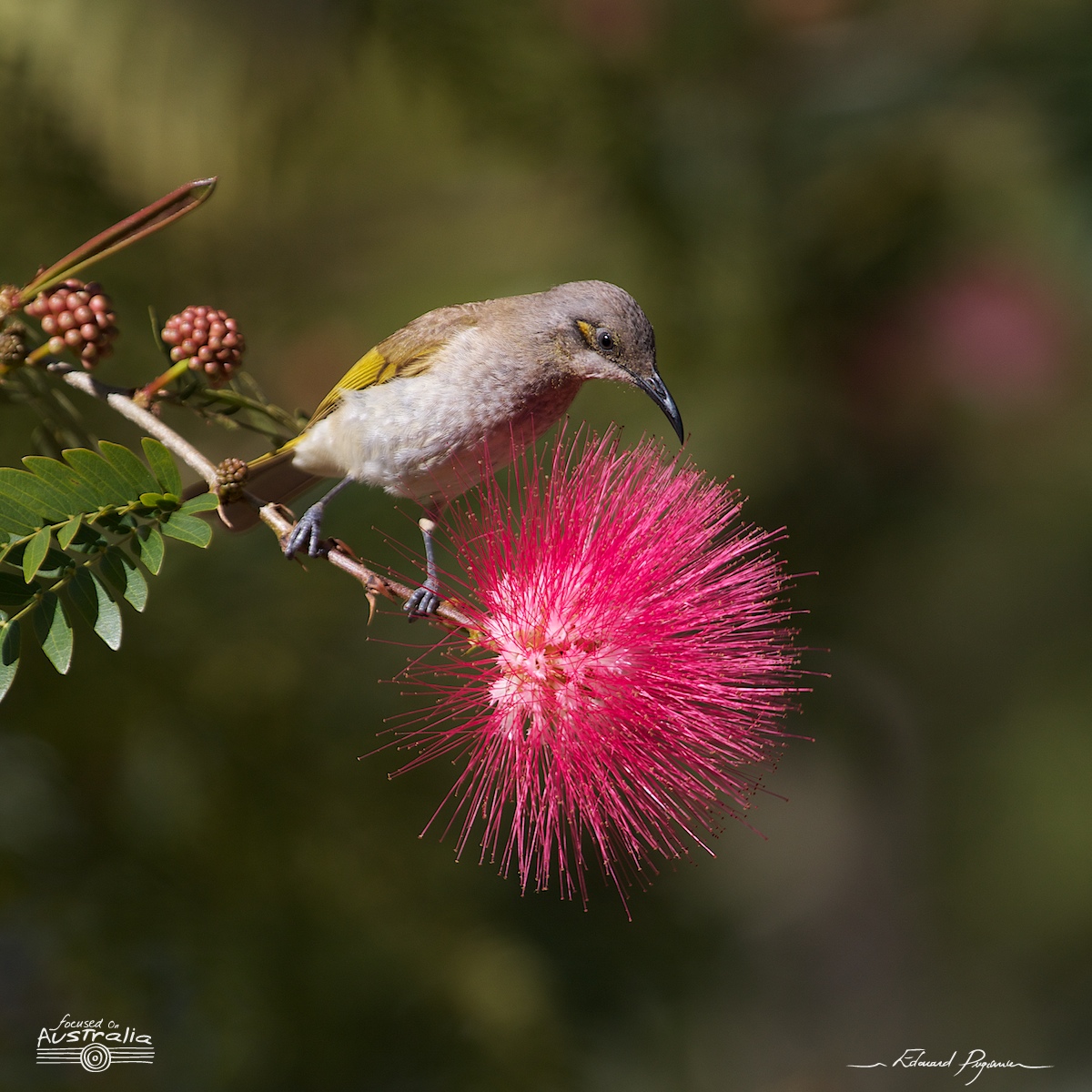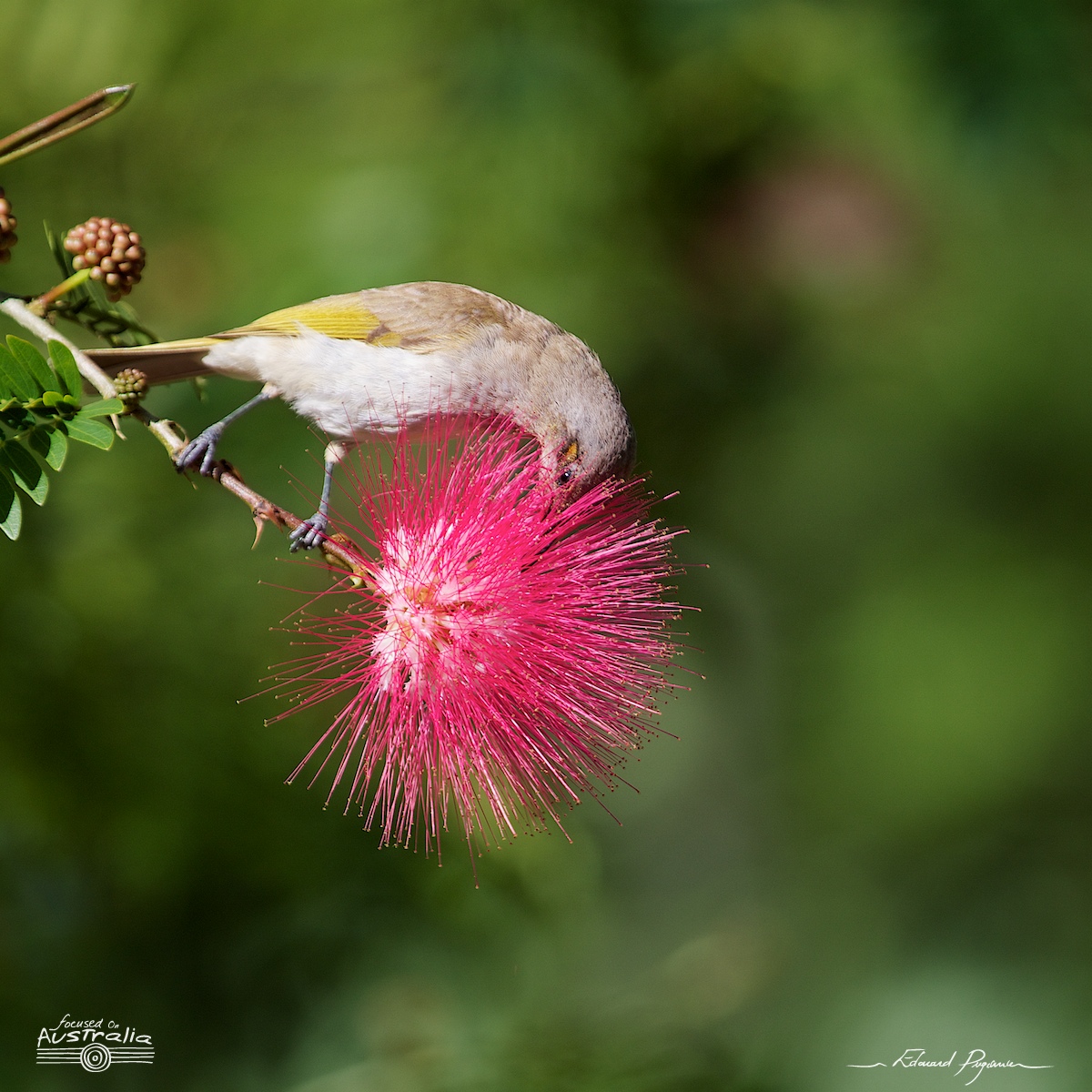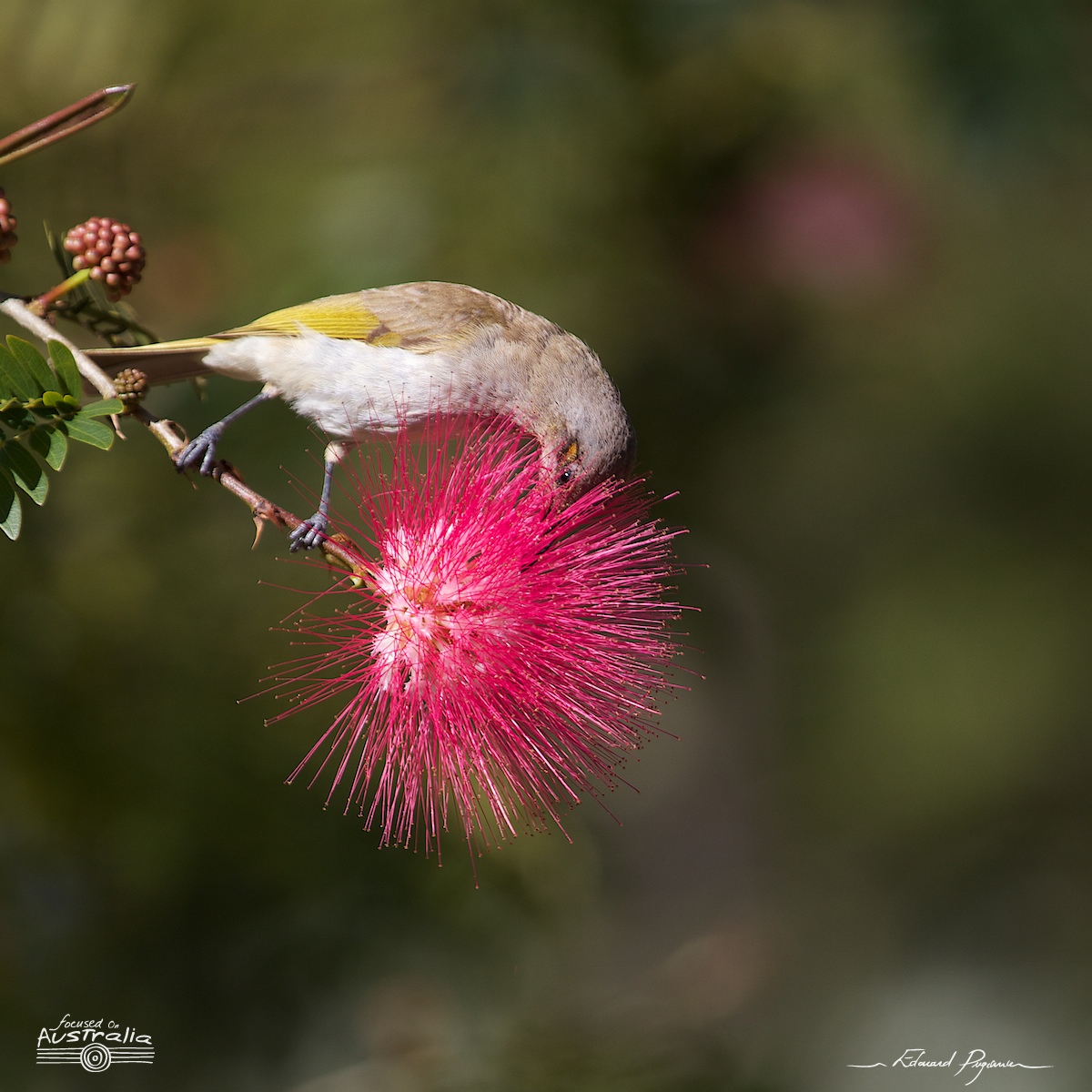The Brown Honeyeater (Lichmera indistincta) is a honeyeater, a group of birds found mainly in Australia and New Guinea which have highly developed brush-tipped tongues adapted for nectar feeding. It is a medium-small brownish bird, with yellow-olive panels in the tail and wing and a yellow tuft behind the eye.
Widespread across western, northern and eastern Australia, the Brown Honeyeater occupies a range of habitats from mangroves to eucalypt woodlands. It is seasonally nomadic within its local area, following flowering food plants. While it usually forages alone, it also feeds in small groups, or flocks of mixed honeyeater species. Nectar and insects form its diet. It occupies the same breeding territory each year, and lays two or three eggs in a cup-shaped nest woven from grass and soft bark. Both sexes contribute to nest building and feeding the young. It has a loud, clear, musical song, described as the best of all the honeyeaters.
While the Brown Honeyeater is declining in some areas such as the Wheatbelt region of Western Australia, overall its population levels and distribution are sufficient to have it described as of Least Concern for conservation.



